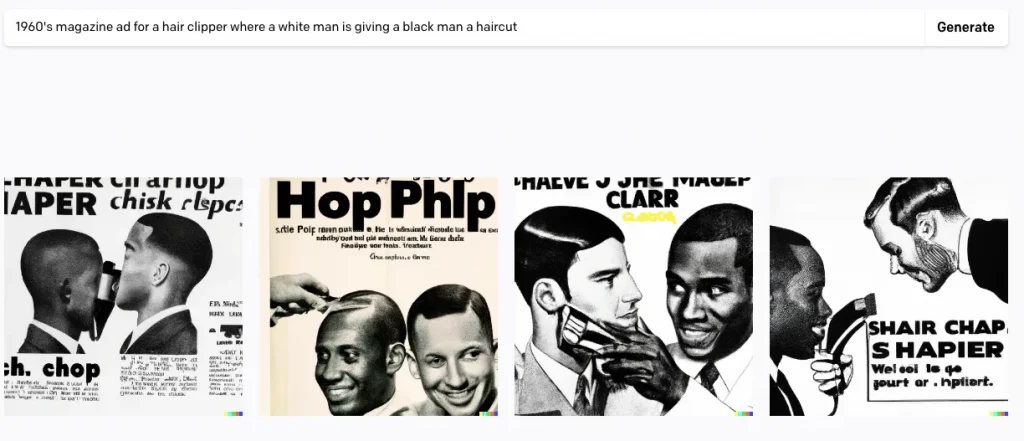Publications

Members of the Critical By Design team have contributed to a wide range of knowledge mobilization efforts across a range of publication types, including online newspapers and open access journal articles. In doing so, our goal is to spread the impetus for ethical thinking in design work to catch the attention of laypeople, professionals, and academics alike. We believe all these parties must be engaged together for the discussions surrounding responsible innovation to make meaningful progress.
Organized below is a chronology of our team’s research outputs since the project’s inception in 2022. Publications are listed by year alongside links (where possible) and citation information to promote easy access and reference.
An Analysis of Engineering Students’ Responses to an AI Ethics Scenario. Orchard, A., & Radke, D. (2023). Proceedings of the AAAI Conference on Artificial Intelligence, 37(13), Article 13. https://doi.org/10.1609/aaai.v37i13.26880
- This article stresses the importance of teaching the sociotechnical implications and ethics of developing and using artificial intelligence (AI) while highlighting pedagogical obstacles that engineering undergraduate students experience in applying these concepts. Using 53 survey responses from engineering undergraduates, this paper measures students’ abilities to identify, mitigate, and reflect on a hypothetical AI ethics scenario.
Fostering responsible innovation with critical design methods. Orchard, A., & O’Gorman, M. (2024). Journal of Responsible Innovation, 11(1), 2318823. [PDF]
- This article argues that methods and expertise from the arts and humanities–disciplines that excel in the critical contextualization of technological progress–can help foster an ethos of responsible innovation in engineering education. It presents two examples of pedagogical interventions for future tech developers: 1) a cross-disciplinary curricular intervention with English and Systems Design Engineering students; 2) a series of Responsible Innovation workshops conducted with students.
Opportunities and Obstacles for an Embedded STS Program in Engineering. Orchard, A. (2024) Proceedings of the Canadian Engineering Education Association (CEEA ACEG). (Forthcoming)
The Innovation Problem Finder Dartboard. Orchard, A. (2024). Proceedings of the Canadian Engineering Education Association (CEEA ACEG). (Forthcoming)
When it comes to AI, it feels like we’re doing more adaptation than adoption these days. This is not a good feeling. O’Gorman, M. (2024, June 21). Globe and Mail. https://www.theglobeandmail.com/opinion/article-when-it-comes-to-ai-it-feels-like-were-doing-more-adaptation-than/
This article prompts us to think about the difference between the individuating, enriching process of adopting and the deindividuating, restricting process of adapting to the emergence of AI in society. The accelerated rate of AI development without pause for critical thinking holds us in the latter, and evades critical discussion on the environmental, societal, and ethical consequences that may follow unquestioned adaptation. A free version of the essay is available on Medium.
At the heart of artificial intelligence is racism and colonialism that we must excise. O’Gorman, M. (July 13, 2023). The Globe and Mail. https://www.theglobeandmail.com/business/commentary/article-at-the-heart-of-artificial-intelligence-is-racism-and-colonialism-that/
- This article explores the colonial implications of A.I. trained on racist data sets due to the relative lack of data on racialized peoples over decades of research. In doing so, it questions the conveniences settlers take for granted in the creation and social acceptance of new technologies. An extended version of the essay is available on Medium.
EAAI-23 Blue Sky Ideas in Artificial Intelligence Education from the AAAI/ACM SIGAI New and Future AI Educator Program. Guerzhoy, M., Neumann, M., Virtue, P., Anderson, C. J., Singla, Y. K., Orchard, A., & Shah, R. R. (2023). AI Matters, 9(2), 24–29. [PDF]
- This publication is a short collection of the “blue sky” essays written by the 2023 New and Future AI Educator (NFAIED) program awardees, intended to help motivate discussion around various current and important issues in AI education. The collection includes Critical By Design’s Alexi Orchard work on “Using Critical Design Methods to Teach AI Ethics.”
Embracing generative AI in the classroom. McAlmont, D. (2023, October 19). University of Waterloo. https://uwaterloo.ca/news/arts/embracing-generative-ai-classroom
- This article covers Dr. Marcel O’Gorman’s experience teaching a fourth-year undergraduate course on techno-critical writing and design that focuses on key issues around responsible innovation while integrating A.I. use in a way that encourages critical thinking.
- This article reflects on the corporate-speak surrounding “responsible innovation” and “tech for good” applied to first-hand experience teaching ethics to engineers. It explores the positive impact this rhetoric has when integrated effectively in curriculum practice, using a project surrounding Waterloo Park as an example.
Augmented reality smart glasses in focus: A user group report. Orchard, A., O’Gorman, M., La Vecchia, C., & Lajoie, J. (2022). Extended Abstracts of the 2022 CHI Conference on Human Factors in Computing Systems (pp. 1-7). [PDF]
This study examines how users of Focals by North, an Augmented Reality Smart Glasses (ARSG) product, employ the device, successfully or not, to facilitate daily activities such as scheduling, communication, wayfinding, and how non-users perceive the interactions of Focals users. The study found widespread resistance to the product as participants preferred choice when receiving notifications, and greatly questioned the need for notifications to appear in their field of vision.